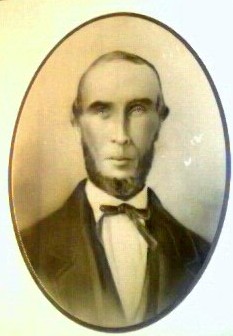Marker DYS464 is a rapidly changing Y chromosome marker and a multi-copy marker. It most often has four copies, which are labeled: DYS464a, DYS464b, DYS464c, DYS464d. Marker DYS464 is also known to occur more than four times. Additional copies of DYS464 are called: DYS464e, DYS464f, and so forth. When more than four copies of DYS464 are found in a DNA sample, the results for all the copies are provided by Family Tree DNA.
When testing a random sample of 679 males for DYS464, scientists have found that the result 15,15,17,17 occurred in 10.6% of those tested, 15,15,16,17 occurred in 7.5% of the samples, and all the other results occurred less than 5% of the time, with over half these results only occurring once. This illustrates that marker DYS464 is valuable in differentiating unrelated persons.
The results for a multi-copy marker are reported in ascending order. For example, here are some results for DYS464:
11 11 14 16
12 14 15 16
Since the results are reported in ascending order for multi-copy markers, this must be taken into account when compar ing the results of the markers between individuals. For example, consider the following results:
Example 1: 15 15 17 17
Example 2: 13 13 15 17
At a glance, you may see 3 differences, but there are really only 2. To correctly interpret the results for this multi-copy marker, the results that match are not counted as differences. The 15 in the first example above matches a 15 in the second example, so the 15 is not counted as a difference, even though the two 15's do not line up in the display of the results. A 17 from the first example matches the 17 in the second example. The two 13's in the second example do not have a match in the first example, so in comparing these two results, we find 2 differences.
Since multi-copy markers change more rapidly, these markers are an excellent tool to identify branches or lines, or to identify persons who are not related in a genealogical time frame.
Subscribe to:
Post Comments (Atom)

3 comments:
My name is Robert James PETTIGREW of Australia. b4 July 1945 Carlton, Victoria, Australia. I am related to the PETTIGREW 's in USA.
I had my DNA done in December 2009. I have been trying to join the Clifton PETTIGREW, PETTIGREW DNA Project to no avail. When I go to log in the Pettigrew name it takes me back to the DNA home page. Can you help me to join PETTIGREW DNA Project?
My William Pettigrew b1762 in Hollowtown, Lanark, Scotland married Margaret CULLEN b1766 at Bothwell, Lanark Scotland, in April 1787.
They had a son Robert PETTIGREW b18 Jul 1802, New Monkland, Lanark, Scotland died 1893 aged 90years ‘Roxhill’ Calderbank near Airdie, Scotland. He was a builder. He married Mary BELL b1806.
Looking forward to hearing from you. Please contact me at jandjharper@hotmail.com.
Regards
Robert
My name is Robert James PETTIGREW of Australia. b4 July 1945 Carlton, Victoria, Australia. I am related to the PETTIGREW 's in USA.
I had my DNA done in December 2009. I have been trying to join the Clifton PETTIGREW, PETTIGREW DNA Project to no avail. When I go to log in the Pettigrew name it takes me back to the DNA home page. Can you help me to join PETTIGREW DNA Project?
My William Pettigrew b1762 in Hollowtown, Lanark, Scotland married Margaret CULLEN b1766 at Bothwell, Lanark Scotland, in April 1787.
They had a son Robert PETTIGREW b18 Jul 1802, New Monkland, Lanark, Scotland died 1893 aged 90years ‘Roxhill’ Calderbank near Airdie, Scotland. He was a builder. He married Mary BELL b1806.
Looking forward to hearing from you. Please contact me at jandjharper@hotmail.com.
Regards robert
Hello,
I descend from George Washington Pettigrew and Mary Parsons. I am not in contact with any male Pettigrew descendants of GWP, but I would to see someone test for this line. Meanwhile, are the full results of the existing Y Pettigrew project available anywhere online? I can find other Y projects, but am curious why I cannot find the Pettigrew Y project. It would be an interesting resource for many Pettigrew researchers.
Best regards,
DC Christensen
Post a Comment